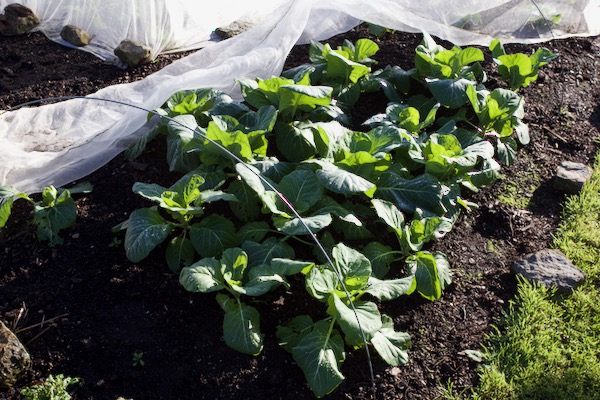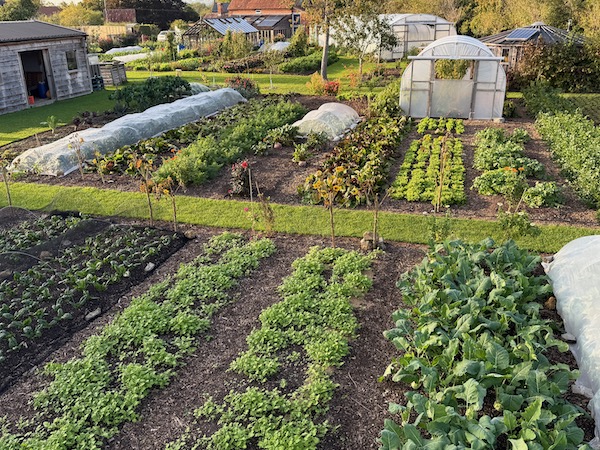
No Dig Day
A chance to celebrate, 3rd November every year. We're running great competitions for children and adults, please see this webpage.

Spanish course
A reminder that No Dig for Beginners is available to buy, all in Spanish.
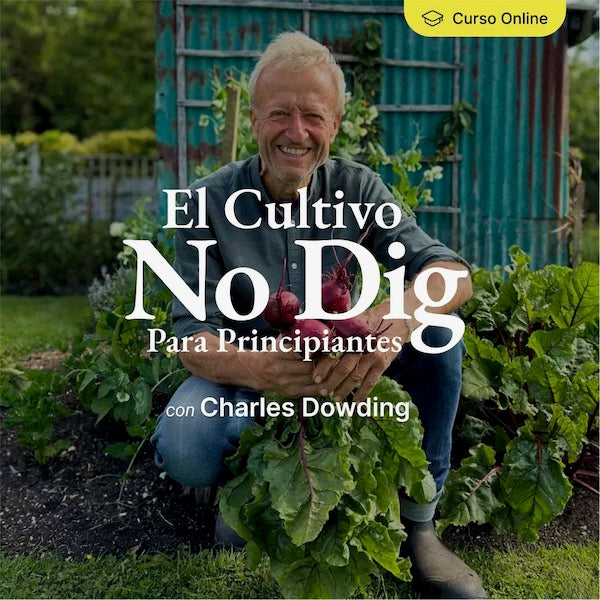
Clearing some misunderstandings
Mulch means what?!
Q Why don’t you cover your amazing soil with a layer of mulch such as dried leaves? It should help the soil stay moist for longer.
A No. For many reasons, I don't use undecomposed materials. They would get in the way of new sowings, such as carrots, and the mustard you see in the foreground here.
This would increase slug populations, even if by only a few that can make a difference.
And most importantly, the compost mulch (yes, compost is a mulch) does a great job of retaining moisture and is quick to absorb and hold on to any rain. But if there were leaves or straw on top, light rain showers could not enter because the leaves and straw take the moisture of light rainfall.
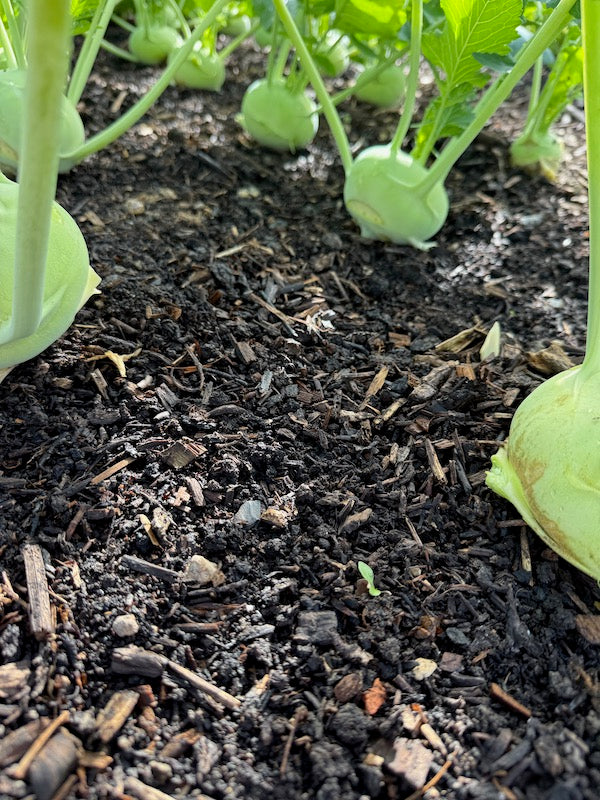
Q I have some green manure packs and wondered if I could plant with my onion sets ?
A That is a vague term, 'green manure', and I would be careful, in fact, I would not do it, unless the only seed was mustard, perhaps phacelia and buckwheat too, which would be killed by frost. Propietary mixes often contain grasses and clover, which you would not be able to get rid of when growing next spring around onions. There are 100 types of green manure, please check the small print.
Or grow vegetables instead. They are a kind of 'green manure' because their leaves are converting carbon dioxide, into carbon for the soil and oxygen for the atmosphere
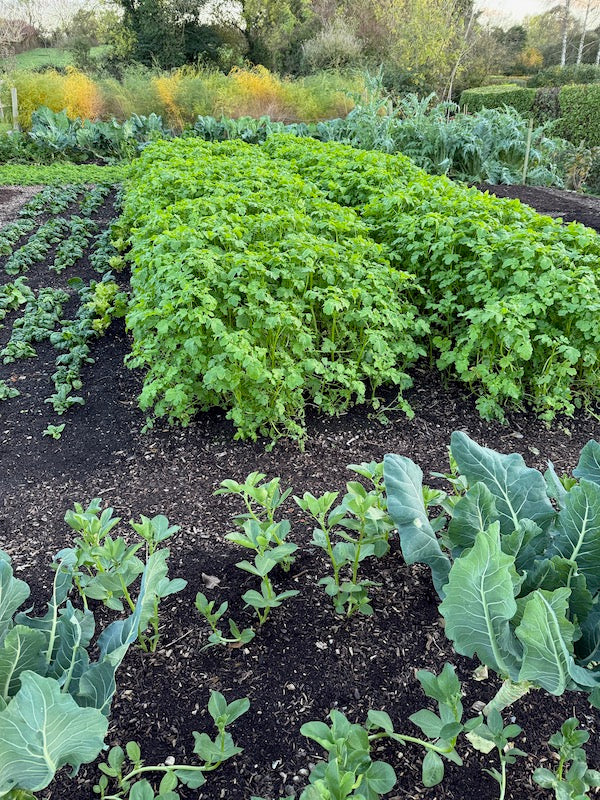
In the front is a cauliflower bed, where we sowed broad beans on 10th September, between the cauliflower. The latter have mostly been harvested now, leaving the beans to grow as a green manure until they are killed by frost. See below.
No dig 'hard' soil
Q I would like to plant broad beans and garlic, but the ground below my gently applied mulch of old horse manure is hard.
A Ground being ‘hard’ is no problem, and it may be because it’s dry. No dig is all about firm soil, so plant whatever you like and whenever appropriate.
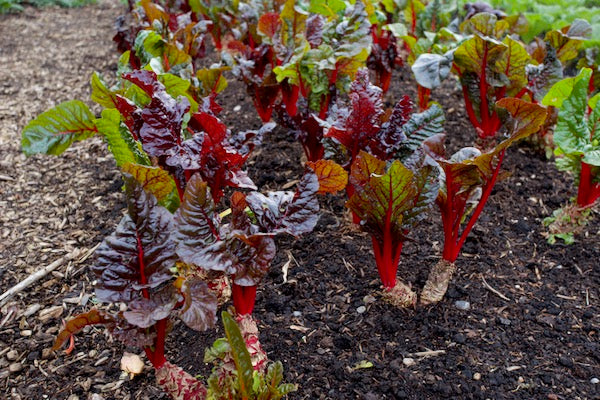
Root veg sown late
Q Will my carrots carry on growing through the colder months? My later sowings are still tiny.
A Unlikely I'm afraid. See my Calendar for best dates. Carrots stop growing at the beginning of winter, and then a switch happens with new growth being mostly in the centre of each carrot, where a stem develops which will turn into a flower stem for seeds in the spring. The carrots then become tougher and fibrous, so you have about six more weeks when they can still grow a little.
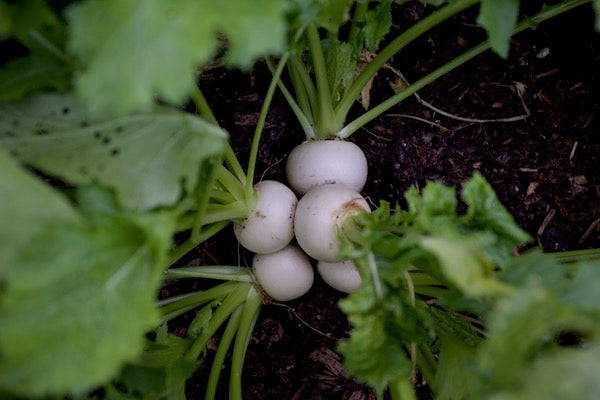
We did a taste test on these turnips and selected the largest ones, to compare with much smaller ones. To our surprise, the large ones were sweeter and equally tender, when cooked for the same amount of time.
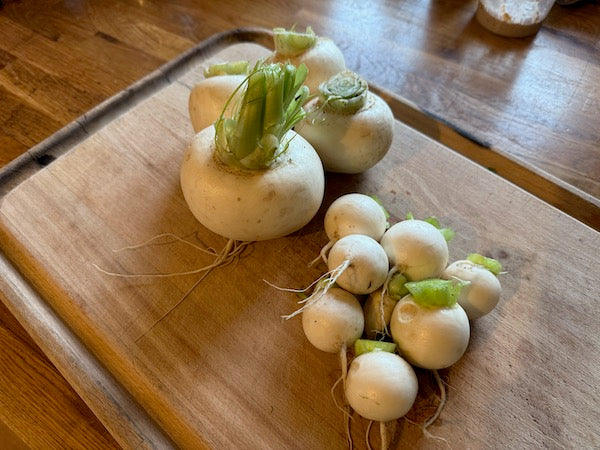
Sow broad beans
In milder climates such as here, this is the last sowing from seed of the year. You can also still plant garlic cloves, even until the end of December.
Whereas broad beans need to establish before winter, so this is a really good time, because also they do not want to be too big. I notice that taller ones such as in the photo above, are killed by frost. Shorter ones are more hardy.
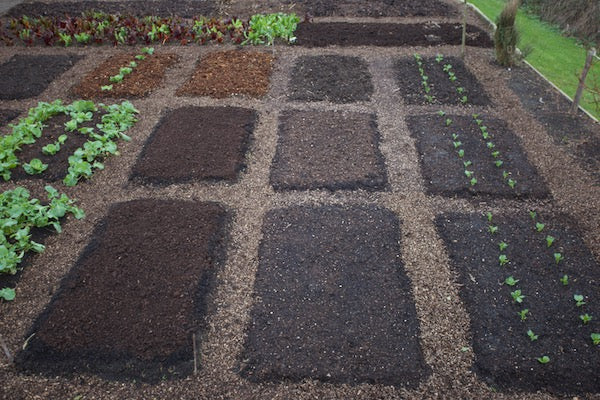
It's sometimes claimed that you can sow peas at this time of year, but only the first early types with round seeds. I have tried this several times, without worthwhile success. I advise to wait until you sow mid February under cover in module cells, for transplanting around the middle of March, and look at the result in the photo, from June this year.
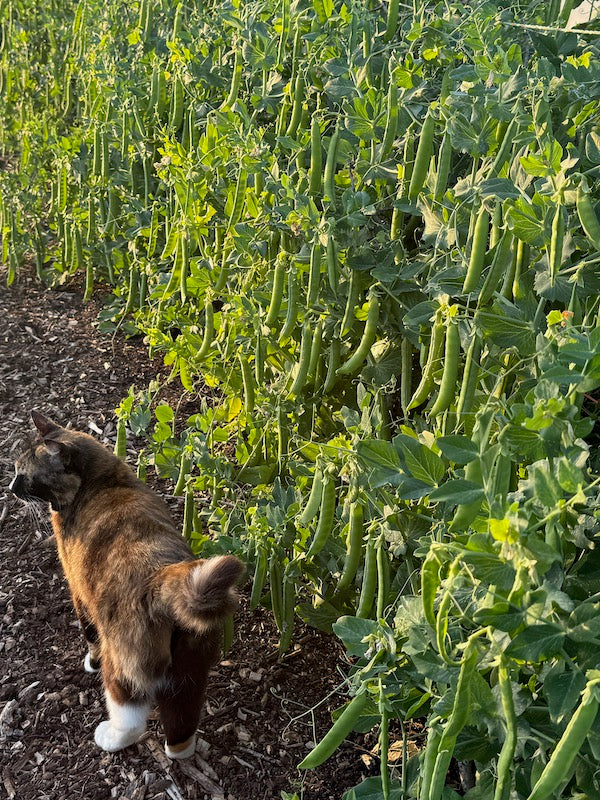
Interplants
I love to experiment with starting small transplants between, or close to, existing and much larger plants. The new seedlings establish while the larger and older plants are finishing, so it's not a problem with competition at this stage. Then you clear the first planting and suddenly see that the new seedlings are on their way to cropping before too long.

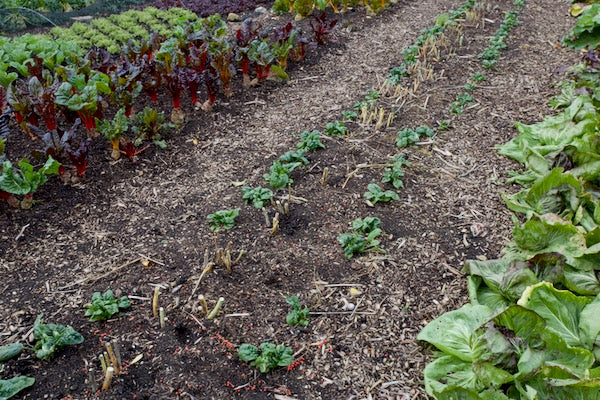
Many of these interplant / overlap, and companion planting ideas are in my new book, Growing Together, published by Dorling Kindersley in March 2026.
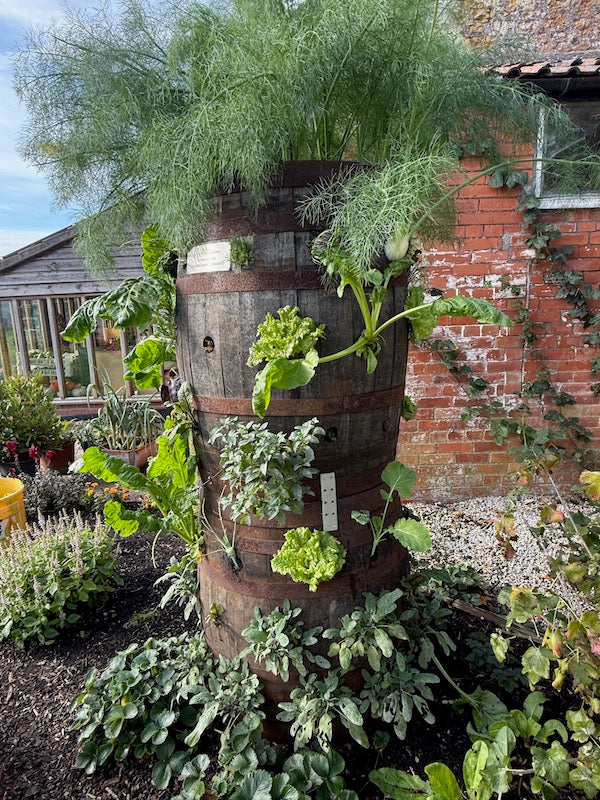
Reaching up
11 weeks growth in this double-barrel tower from @gardenscapes_uprooted. Plants are so adaptable and I did not think the Florence fennel would thrive on the vertical, as have radicchio and kohlrabi. The filling is 2/3 homemade compost, 1/3 soil from here and some seaweed plus rock dust.
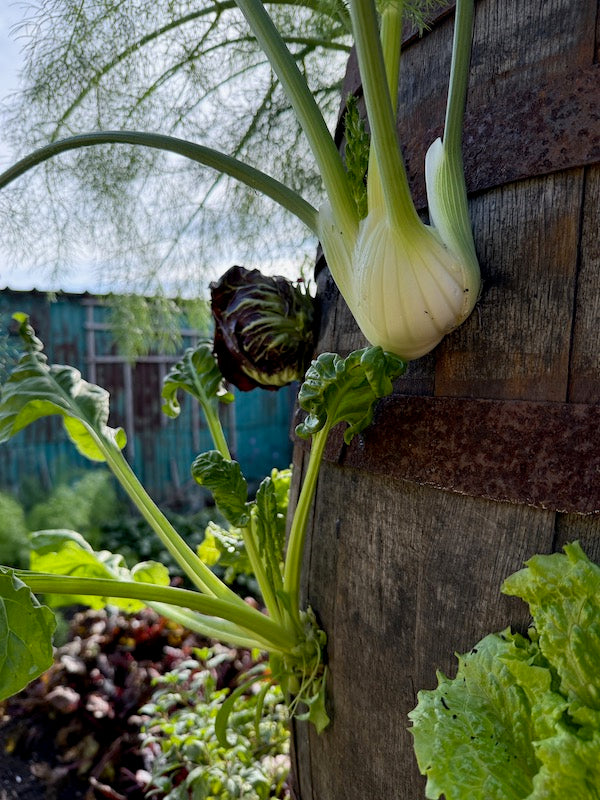
Next year I shall plant more strawberries in the 5cm holes.

And sadly for us, Anne has returned to Denmark. She has worked in the garden since late March, making a huge difference because I've been able to crop more and be less stressed about it, especially on harvest mornings. Minty is missing her as well!
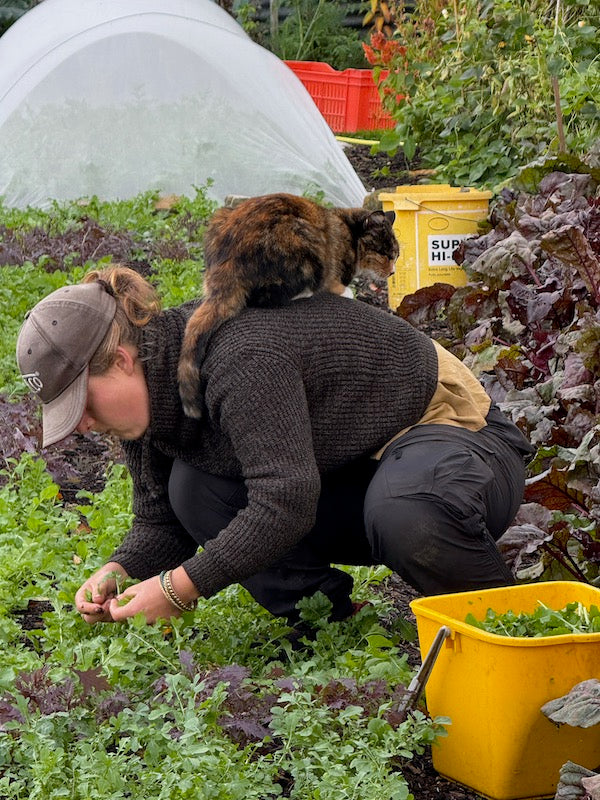
Get Charles's advice in his free newsletter
& 10% off your first order in our shop

